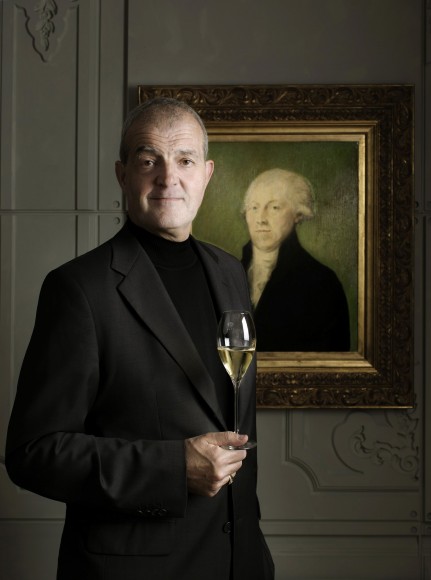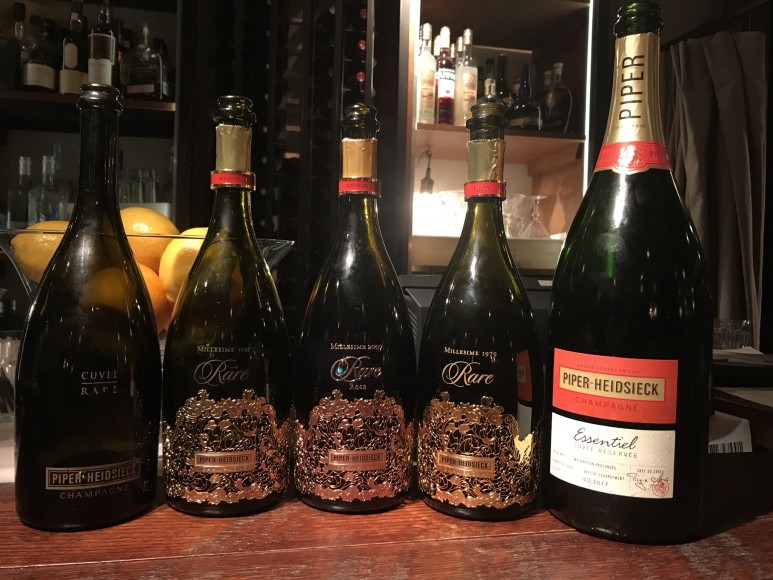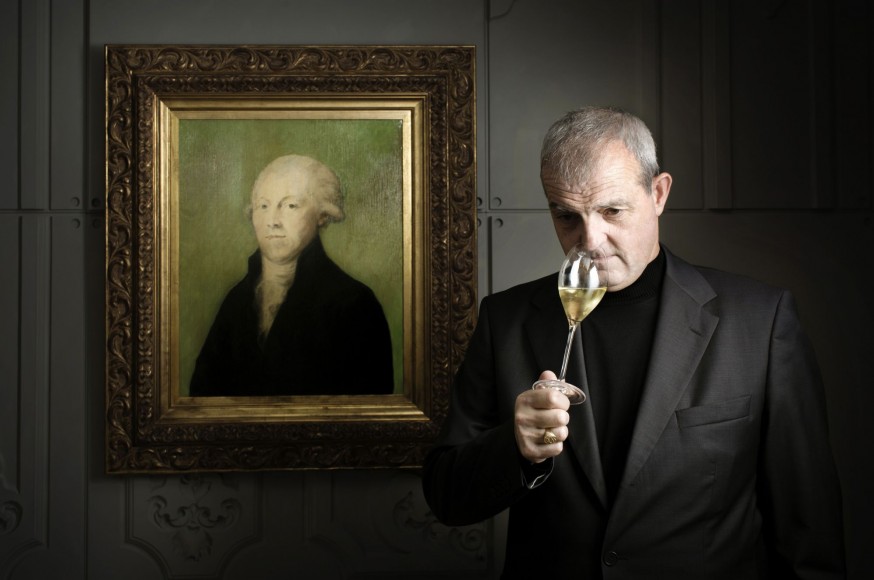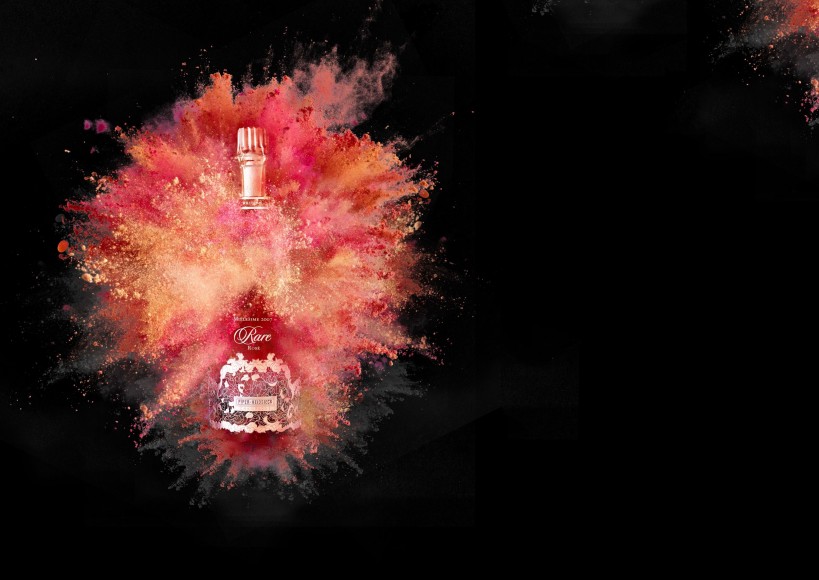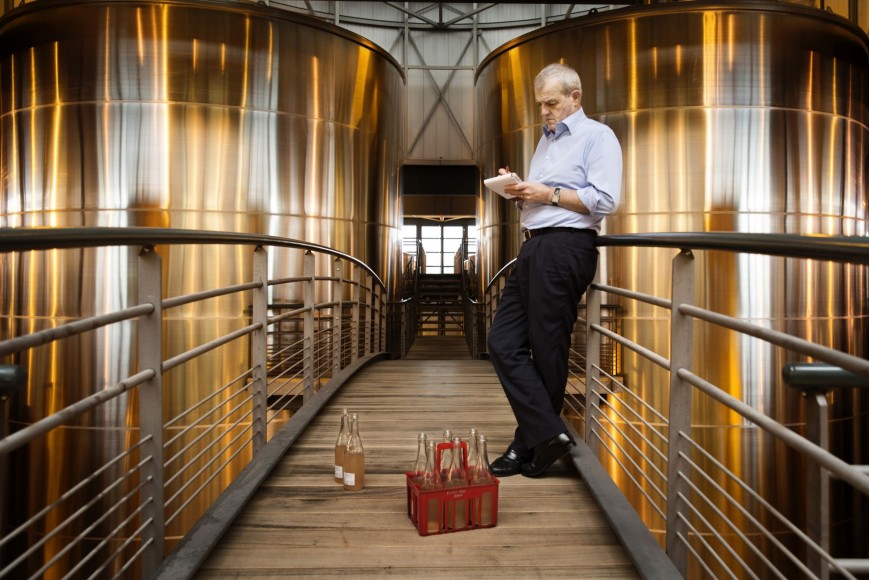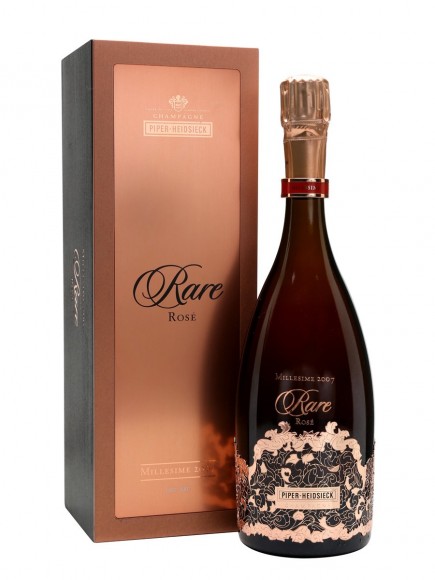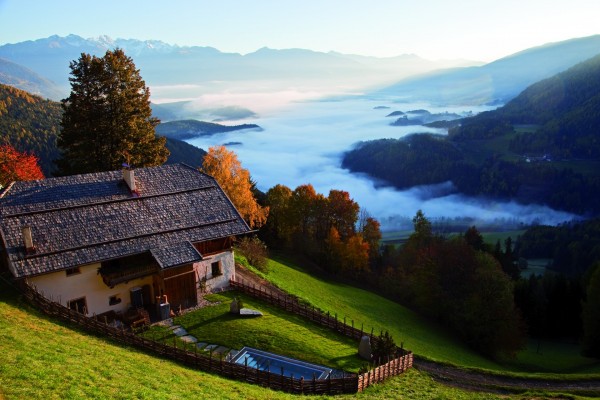When the telephone call came from Simon Stockton, ambassador for Piper Heidsieck, to say one of champagne’s greatest cellar masters was heading my way to showcase his new vintage, it was an invitation I couldn’t resist. I was incredibly flattered that a bottle was being brought into the UK for me in complete secrecy.
When I found out later that it was to taste their vintage prestige cuvée Rare (pronounced ‘Rarr’), I became more intrigued. Rare itself is something of a phenomenon; very much an educated quaff. It quietly stepped onto the champagne scene in 1985, delivering the 1976 vintage, and is produced in relatively small quantities. So, to drink their vintage prestige cuvée with its creator would be an honour.
A prestige cuvée, by definition, is the best wine that a producer makes in their range. Unsurprisingly, this usually comes from the first pressing of the best grapes, harvested from the best villages in Champagne. Some brands may be very familiar to you from their yellow cellophane wrappers, glow-in-the-dark bottles, or even owners that are rappers. A prestige cuvée can be non-vintage, but the most easily recognised are those that have become brands in their own right. I always express a certain amount of skepticism toward the larger nightclub-style brands. This is because I want the bang for my buck to be in the bottle, not in the packaging and advertising. A celebrity endorsement or feature film deal will not turn my palate – that I can assure you.
I found myself a few weeks later furtively making my way from Regent Street into the periphery of Soho, into a dimly lit, but chic boutique hotel bar. I found Regis Camus, Piper’s cellar master, sat relaxed with Simo, with not one bottle, but the whole of Piper Heidsieck’s range for me to revisit. And sat glinting in its very subtle, rose gold faceted bottle was the then-unseen Rare Rosé 2007 awaiting me on ice.
I was taken aback for two reasons. First, because I wasn’t aware Piper were declaring ‘07 a vintage, and second because Rare had never been made as a rosé before. Regis, however, had been thinking about this since the millennium, but wanted to take time to get the assemblage, the blend of grapes. And also the colour.
This tasting was made all the more special, as only 120 bottles of 1500 made were to be initially released in the UK. 750 remaining precious bottles, I learnt, were destined for America, where demand for prestige cuvée has grown massively. This made the bottle in front of me more exclusive than many of the other lifestyle or familiar brand-driven champagnes. Fittingly, Rare Rosé is presented in an understated black lacquer box with subtle rose gold fittings and carries its own individual number to remind you how restricted the contents are, in the bottle you’re holding.
For Camus to deliver this meant that it must have been an outstanding year; one worthy to take Rare into the rosé world (all other vintages had been blanc until this time). I quizzed him on this and he described the weather conditions as giving the vineyard an “unusual year, with extremely early growth.” This growth was then constricted by some very cold weather following the awakening from Spring. As a result, there was a strong pinot noir harvest, making production a possibility. The lesser chardonnay harvest nearly scuppered plans, due to the quantity available.
Regis says he particularly favours chardonnay from the village of Trepail on the Montagne de Reims. This is traditionally a pinot noir-biased area. He likes it for the additional minerality it adds. The chardonnay available was concentrated and of a high quality; it was purely the volume that was of concern. This could have created potential problems in blending 2007 to deliver the finished product and certainly dictated the resulting vintage and its size. But then, a vintage is a snapshot of grapes from a particular single year, so perhaps it was most fitting that Rare Rosés’ debut should be one to test the great master.
Camus says he could see the grapes were optimised for the champagne he wanted to produce. This was ascertained when the vins clair (the still wines before the fermentation that add the fizz) were assessed. At that point, only five or six people in the world were aware that he would be declaring a vintage for Piper Heidsieck. The final resulting blend was 44% pinot noir and the 56% chardonnay. His patience for accuracy in the glass provides a clear line of sight into Regis’s talents. A minimum of eight years in the cellar, like the blanc, allows for the true initial development of aromas and flavours to begin.
Piper Heidsieck was established in 1785 and delivers between three and four million bottles per annum of its various cuvée. It is the sixth largest of the champagne house and has seen ingenious partnerships with some of the most revered designers and organisations, such as Jean Paul Gaultier, the Oscars, Cannes Film Festival, and Christian Louboutin. It was even Marilyn Monroe’s champagne of choice, so no doubt Arthur Miller would have been partial to a glass or two. It was then no wonder the 1976 Rare came to fruition, released in 1985 to celebrate 200 years of the marque. The house retains a focus on its people, who drive the success of the brand.
Originally a farmer’s son, from a wheat-harvesting background, Regis learnt about agriculture and the growing cycle virtually from birth. This was to serve him well later, as it enabled him to understand the viticulture behind the product that would become his driving passion. This has always given him true insight and affinity with the growers that supply and tend Piper’s grapes. These relationships are essential in the region, to ensure there are enough grapes to satisfy demand, as no major house owns enough land to produce their own champagnes without these.
He joined the maison in 1994, working alongside Daniel Thibaut, who was also revered as one of the most important cellar masters in champagne. Daniel, unfortunately, passed away before he could work his magic on Piper with Regis by his side. It then became Regis’ sole project and a great testimony to his old friend and mentor that Regis’s wines are now so lauded. Camus says the most important thing Daniel taught him was communication. This gave him the ability to relate to people at all levels, and how to describe what he required.
I ask how it felt handling his first vintage alone, as chef de cave. Regis says without hesitation that, thanks to Daniel, he was ready for it – adding with a smile that, just in case, he had a bag packed ready to head for California. Piper Heidsieck is now the most awarded champagne house of the century. And with the focus being truly on the winemakers, this looks sure to continue.
The chef de cave, or cellar master’s job is often viewed as a mystery, if not the dark art of alchemy. Regis’s day starts by arriving at work, checking the winery and talking with colleagues until 10:30 am. He then tastes, as he considers this to be the optimum time to undertake this important ‘chore’. Something I shall now be subscribing to personally. Afternoons are kept aside for meetings and other important engagements. He is well known for both his intuition and audacity.
Regis had been considering producing Rare as a rosé since 2000. This careful preparation has enabled him to make some great vinification decisions, showing great foresight as now with Rare Rosé. “Boldness is a cardinal virtue,” he says, and that one of his skills as a cellar master is “negotiating one’s way through a year, which presents the most challenging climatic conditions. Procuring fruit which is almost luminous in its intensity and then creating a vintage cuvée of rich complexity and finesse.”
Succession planning has been key at Piper Heidsieck in the past, and Séverine Frerson works with Regis now as deputy cellar master. Regis, however, has no plans to give up the tasting glass for many years to come, and says he learnt the importance of work-life balance from his colleagues.
He also remarks on how quickly time passes. I ask if he felt pressure to declare a vintage in the year 2000 for the millennium? He quickly smiles, and replies that he did not, as the harvest was of an appropriate quality to do so describing it as ‘accomplished’. As an afterthought, he adds, “It was also good to leave my stamp on a millennial wine, as I don’t think I will be here for the next one to make a wine.” He also comments that he would never make a vintage due to commercial pressures and it is his sole decision if a vintage happens. His tone becomes authoritative and reinforcing, as he says “Moi, je decide.” He then insists as chef de cave, “Jamais, jamais, jamais” – or never, never, never. He foils this to show no arrogance and qualifies that he still listens to and observes his consumer and taste trends to aid his direction.
And so, to the liquid in the glass. The colour is the most gorgeous, light, rusty, salmon pink hue, with apricot and clementine. The style is very fruit-forward and luscious, hinting at the strength of the pinot noir harvest in 2007. The depth in this Rare Rosé is astonishing, and I believe it has longevity, unlike other wines I have tasted from 2007, which seem remarkedly advanced. Chardonnay has helped temper this adding richness with its lemon balm notes. This is a remarkably rich and multi-faceted glass that usurps most prestige cuvée. This complexity brings forward herbs from far-off lands that have been roasted by the sun. My first impression is of lychees, persimmon, and just a hint of pink peppercorns and paprika. There is a slight oriental vanilla high note and an inherent warmth and spiciness with blackberries, and just a hint (dare I say) of cold-climate British cherries. A slight hint of wild strawberry also prevails, fresh and concentrated.
The finish is full in the mouth and long, fruity toasted brioche notes bring that perfumed edge to this pink effervescent wine. There is a great prospect for aging here, and I can see these flavours developing and becoming more prominent effusing into a delicious mélange over time. It is great to drink now, but four to five years collaring will allow further development; nine to eleven years will see a unique maturation and a further treat for the palate.
Regis was undoubtedly right to wait and stamp his talent onto a vintage that is unique, complex and that required great skill. It was brave to do so, with such a relatively small release due to a limited harvest. But this makes Rare Rosé 2007 all the more special. It also shows that Piper Heidsieck is firmly focused on making great wines, and not the commercialism often applied to vintage champagnes. Regis laughs when I describe some of these as “chi chi”. If this first vintage is an indication of the power of Rare Rosé, then please let there be many more vintages as carefully selected as this one. In Camus we trust.

